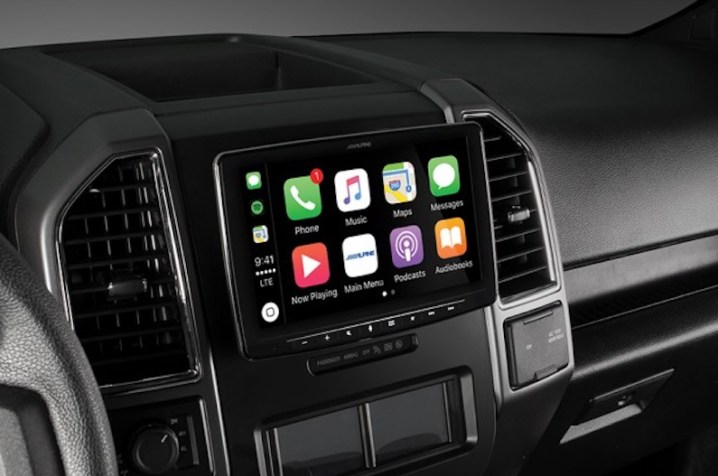
Just because you bought your car in 1998 doesn’t mean you can’t have tech from 2018 gracing its interior. Here to prove that is Alpine, which introduced the iLX-F309 in-car infotainment system, a touchscreen that “hovers” slightly in front of your dashboard so that you can place a modern screen even in the most retro of vehicles.
The 9-inch screen is an AM, FM, audio, and video receiver, and fits into a 1-Din chassis. However, you won’t have to mount the display truly flush with your dash — rather, the WVGA touchscreen will jut out just a tad, which is why you can enjoy the 9-inch size rather than the standard 6.1- or 7-inch screen that you would normally find in an aftermarket unit.
The iLX-F309 is particularly unique because it requires no customization or vehicle specifications — just fit it into the chassis, and from there, you can angle the display in a number of displays to either avoid other dashboard elements or improve its visibility. The screen can be positioned up to 20mm closer to the dashboard, moved up or down 30mm from its default position, and tilted up or down by up to 45 degrees for quite a bit of customization.
Compatible with Apple’s CarPlay when connected to an iPhone via a cable, you can use this touchscreen to display navigation, play music, offer up calls or messages. You can do the same with Android Auto if you connect an Android phone. If you’re neither a CarPlay nor
While the unit does not come with a built-in CD player (because really, who is still using CDs in their cars?), you can always attach a combined CD and DVD player if you’re really looking for a way to get distracted while you drive. For something a bit safer and more useful, you can look into a rear input camera input to help judge distances while parking.
“The iLX-F309 uses a new design that’s quite different from traditional screen-based systems,” said Mike Anderson, vice president and general manager, brand business unit, Alpine Electronics of America, Inc. “We’re excited to offer this 9-inch screen solution for a wide variety of vehicles without the need for custom installation.”
The iLX-F309, which will set you back $1,100, has begun shipping and is available for purchase in-stores at authorized Alpine retailers.
Updated on February 21: The iLX-F309 has begun shipping and can be purchased for $1,100.


